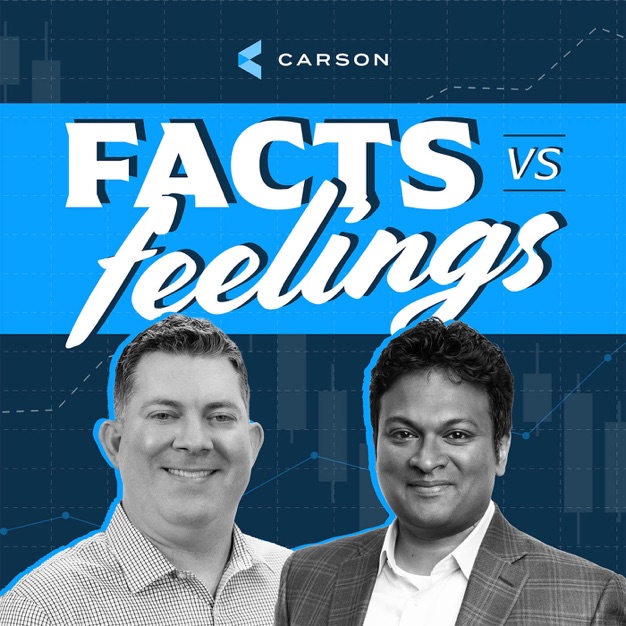Has the Federal Reserve Achieved a Soft Landing in 2023?

Lida R. Weinstock & Marc Labonte
Since the Federal Reserve (Fed) began raising rates in response to high inflation in March 2022, it has been trying to achieve a “soft landing”—a return to low inflation while maintaining moderate economic growth. By contrast, a majority of private sector economists had, until recently, predicted that the Fed’s actions would result in a “hard landing”—a recession—in 2023.
Achieving a soft landing after sustained monetary policy tightening is notoriously difficult. Historically, most periods of sustained tightening have been followed by recessions. Nonetheless, the recent period of monetary policy tightening has so far resulted in falling inflation without a decline in employment or economic activity. If inflation reaches the Fed’s target of 2% without a recession, a soft landing will have been achieved. This In Focus looks at whether a hard landing has been avoided or merely postponed. (For information on how recessions are declared and defined, see CRS In Focus IF10411, Introduction to U.S. Economy: The Business Cycle and Growth.)
Recent Monetary Tightening
Throughout much of 2021 and 2022, inflation persistently rose to levels not seen in the United States since the 1980s. (See CRS Report R46890, Inflation in the Wake of COVID-19.) To reduce high inflation, the Fed raised short-term interest rates from a range of 0%-0.25% to a range of 5.25%-5.50% between March 2022 and July 2023 (see Figure 1). The Fed has not ruled out further rate increases depending on the future path of prices and other economic data. The Fed is statutorily mandated to maintain low and stable prices—which it defines as 2% inflation, as measured by the personal consumer expenditures price index (PCE)—and maximum employment. Monetary policy tightening (higher interest rates) works to reduce aggregate demand (total spending) in the economy, which can reduce inflationary pressures but can also result in rising unemployment, often leading to recession. In theory, it would be difficult for monetary tightening to generate a large reduction in inflation without a significant economic slowdown. For more information, see CRS In Focus IF11751, Introduction to U.S. Economy: Monetary Policy.
History of Hard and Soft Landings
Historically, periods of similarly rapid and substantial interest rate increases have resulted in recession (see Figure 1). Some of the more obvious parallel periods, in terms of starting inflation rate and magnitude of rate hikes, are recessions during the so-called Great Inflation of the late 1960s to the early 1980s. (Not all recessions have been direct results of monetary tightening. For example, the 2020 recession was a direct result of the COVID-19 pandemic and its effects on economic activity.) Not every monetary tightening has resulted in a recession. Fed Chair Jerome Powell has pointed to soft landings after monetary tightening in 1965, 1984, and 1994. Those episodes were arguably less challenging than the current one, however. They featured smaller cumulative rate increases than this most recent period of tightening because inflation was already low in 1965 and 1994 and below 5% in 1984. A recent study of historical soft and hard landings found, “If the need to fight inflation is not too extreme, and serious adverse events like wars or supply shocks do not intervene, the Federal Reserve has shown itself capable of engineering a landing that either does not induce a recession or, if it does, induces a small one. It has done so several times.”
Figure 1. Federal Funds Rate and Inflation
January 1960 to September 2023

Source: Federal Reserve, Bureau of Economic Analysis.
Why Is a Soft Landing Possible?
By many measures, the economy looks like it is headed for a soft landing. Despite a recent pause in rate increases, inflation has continued to fall. PCE was unchanged in October 2023 for the month, and the 3.0% year-over-year increase was the lowest rate since March 2021. There are signs that the labor market is not as tight as it was last year: For example, the unemployment rate rose from 3.4% in April 2023 to 3.9% in October 2023 (before falling to 3.7% in November), and job growth over the last 12 months has fallen to a more sustainable rate—a little more than half the previous 12 months (see Figure 2).
How was the Fed able to raise rates rapidly and by a large magnitude without triggering a hard landing? Why were the predictions of a majority of economists incorrect? One explanation is that the labor market has tightened some as predicted following monetary tightening—but because unemployment started at such low levels, the rise has so far not resulted in the high levels that one would associate with a recession. (The lowest peak unemployment rate in a U.S. recession since World War II is 6.1%.) Historically, periods of low unemployment (below 4%, for example) were associated with rising inflation. Based on this phenomenon, economists theorized there was a non-accelerating inflation rate of unemployment (NAIRU) and that inflation would rise when unemployment dipped below the NAIRU. But in the low inflation era, low unemployment in 1999-2000, 2006-2007, and 2018-2019 did not trigger sustained increases in inflation. In response, policymakers came to view the inflation-unemployment relationship as weak, resulting in a shift in monetary policy strategy to no longer raising interest rates solely because of low unemployment.
Figure 2. Monthly Job Growth
January 2021 to October 2023

Source: BLS, Current Employment Statistics.
One reason the relationship might continue to be weak is because the initial rise in inflation was closely linked to disruptions that temporarily constrained supply. Supply chain issues and a drop in the size of the labor force resulting from the pandemic were initially significant contributors to inflation. Then in 2022, the Russian invasion of Ukraine caused commodity prices, such as gasoline prices, to rise rapidly (as measured by the percent change from a year previously). Now supply chain issues have largely been resolved, the labor force participation rate has increased notably in the past year, and commodity prices have generally fallen. Some economists believe that easing supply constraints have made it easier for the Fed to lower inflation without any rise in unemployment needed, a scenario consistent with a soft landing.
Another explanation for why a hard landing has been avoided is that consumers had savings to fall back on even as higher interest rates and prices eroded borrowing capabilities and purchasing power. Consumers accumulated excess savings during the pandemic, when travel and certain types of commerce constrained consumption and government transfers in pandemic relief legislation led to a temporary spike in income. According to the Fed, excess savings peaked at $2.3 trillion in the third quarter of 2021. The increased stock of savings may have allowed consumers to continue to spend at elevated rates, as evidenced by recent drawdowns in the stock of savings and robust personal consumption expenditures of recent quarters. By its nature, this support to spending is only temporary, however. One study found that excess pandemic savings has been drawn down (though not yet fully), falling to about 10% of annual disposable income in the second quarter of 2023 after peaking at around 14% at the end of 2021.
A historical pattern that might suggest a hard landing will be avoided is that a recession so soon after the last one would be unusual: In the past 50 years, it has happened only once (in 1981, also when inflation was high). The past four expansions have lasted between six and 10 years. This could be because a recession is less likely before an expansion has gathered full steam or because the probability of a negative shock that derails the expansion at any given time is low. The unique circumstances around the post-COVID-19 recovery might make it less likely that the economy will follow the historical pattern, however.
Is a Hard Landing Still Possible?
Recession looks to have been avoided in 2023, and many indicators have shown promising signs in recent months. Nevertheless, it is still possible that the economy could end up in a recession in 2024 through a few different scenarios.
If inflation remains above target, the Fed may begin raising rates again, which could result in a recession if implemented too quickly or aggressively. Although inflation has been coming down, core inflation (which removes food and energy prices) is still 3.5%, and there are particular categories, such as shelter, that have remained high. If the relationship between tight labor markets and rising inflation has resurfaced since the pandemic, inflation is unlikely to fall without a further increase in the unemployment rate, which would be consistent with a recession. Also, conflict in the Middle East has some economists concerned about its potential effects on oil prices, which could cause increases in inflation and lower growth in the future depending how the situation progresses.
Some economic metrics suggest that a soft landing has not been achieved, leaving open the possibility of a hard landing later on. This is because a strong economy could keep inflation elevated, making it more likely the Fed will continue to raise rates. Gross domestic product grew by an unexpectedly high 5.2% in the third quarter of 2023 (boosted, in part, by robust consumer spending), and the unemployment rate is still quite low by historical standards.
Another possibility is that the Fed’s actions to this point have already made a recession likely, but it just has not started yet. Monetary policy changes affect the economy with a long and variable lag, so growth may yet slow. One of the reasons the Fed has paused rate hikes for the time being is to see how previous increases are affecting the economy.
Lastly, were economic activity to weaken while inflation remained above target, the monetary stimulus needed to avoid a recession could exacerbate inflationary problems. This could potentially make the Fed unwilling to provide that stimulus. For the time being, projections of the economy remain mixed. For example, the Wall Street Journal Survey of Economists from October 2023 showed a median probability of recession in the coming year at 50%.
Lida R. Weinstock, Analyst in Macroeconomic Policy
Marc Labonte, Specialist in Macroeconomic Policy
IF12543
Disclaimer
This document was prepared by the Congressional Research Service (CRS). CRS serves as nonpartisan shared staff to congressional committees and Members of Congress. It operates solely at the behest of and under the direction of Congress. Information in a CRS Report should not be relied upon for purposes other than public understanding of information that has been provided by CRS to Members of Congress in connection with CRS’s institutional role. CRS Reports, as a work of the United States Government, are not subject to copyright protection in the United States. Any CRS Report may be reproduced and distributed in its entirety without permission from CRS. However, as a CRS Report may include copyrighted images or material from a third party, you may need to obtain the permission of the copyright holder if you wish to copy or otherwise use copyrighted material.
Share This Article
Sponsored Content
Register: The Future of Senior Health & Wealth for Financial Professionals
The Medicarians conference is designed to help financial professionals grow their books of business, provide even better support to their customers, and navigate the ever-changing regulatory landscape. If you have clients that are 50 years or older, this event is for you. Get a free ticket.
Let a tax expert do taxes for you, start to finish, with TurboTax Live Full Service.
TurboTax Live Full Service will match you with your own dedicated tax expert who has experience in your unique tax situation and will do your taxes from start to finish.
Official Forecast: 2023 Social Security COLA
The US Bureau of Labor Statistics just released the CPI-W for August, which means were getting closer to determining 2023's Social Security COLA (Cost of Living Adjustment).









